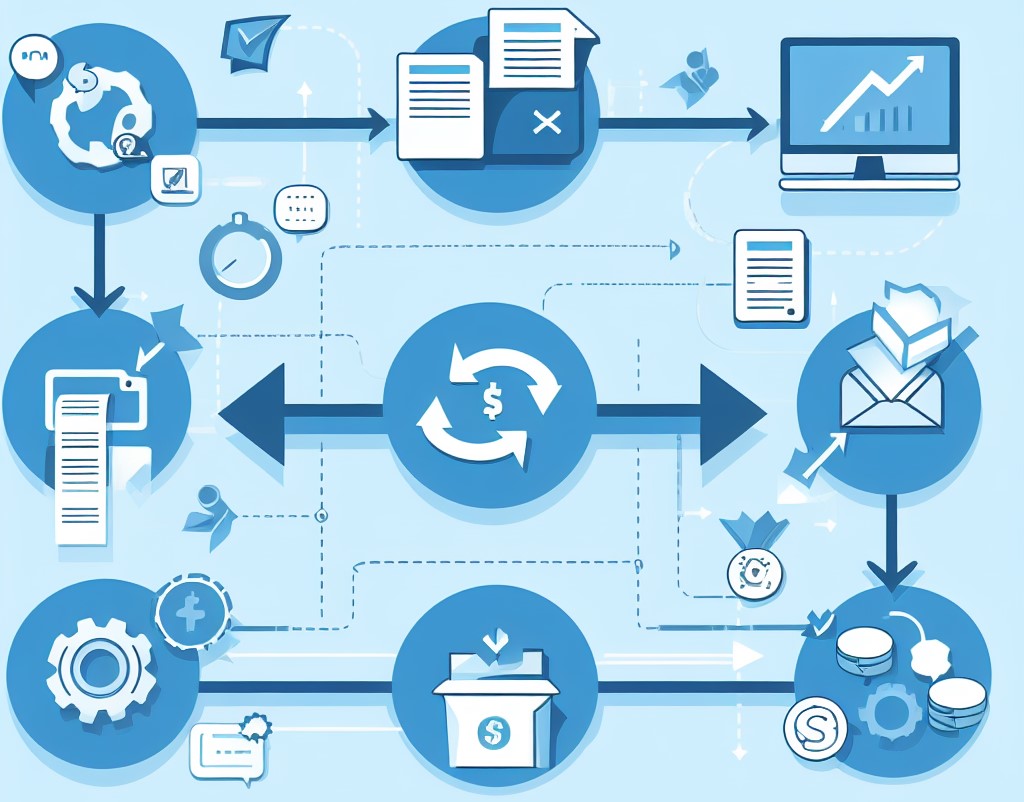Are you making resolutions for your business for next year? A new year marks a figurative fresh start and naturally lends itself to focus on new opportunities to streamline the way you do business.
Below are some of our customers’ most popular business resolutions for 2025, and easy ways to help your organization achieve them!

1. Do More with Less
Do a deep dive into the software you currently use to see if there are features you’re not taking advantage of or could be added for a small fee. Workflow automation and robotic process automation (RPA) can save your business hundreds of work hours per year and generally come standard in most leading content, customer, or payroll management software.
Depending on what you can and choose to automate, this could mean that you don’t have to fill an open position or hire additional workers.
2. Start/Continue/Finish Your Digital Transformation
Most of our customers are in the middle of their digital transformation. Many have done some combination of scanning their backfile records, implementing a day-forward scanning approach to their files, or eliminating paper at the start by switching to e-forms and secure online portals. However, it’s rare that every organization has done all of these things.
Sit down and identify which processes or departments haven’t made the full switch to digital, and then prioritize them for implementation. We recommend starting with the process or department that will transition quickest as that gives your organization a win and motivates employees to continue with the transformation.
Check out this article which outlines tips for going paperless: 8 Tips for How to Go Paperless.
3. Implement Artificial Intelligence (AI) Tools
Many organizations are racing to implement AI tools into their processes and workflows. The important thing to know is that not all AI tools are created equal, and not all of them are appropriate for every business case.
For example, you may have heard of businesses using tools like ChatGPT to write social media copy, email blasts, and blog posts. The issue with this is that ChatGPT is trained on a wide range of data from across the internet, writes with biases, and has only recently learned to access news about current events. It doesn’t know your business or industry the way that your business’ data and the leaders within your industry do.
A good option to explore is investing in your own Large Language Model (LLM) and feeding it with data extracted from your own company documents, files, content, and industry knowledge. This will let you ask questions like “when was the last amendment made to the employee handbook?, compile data like “show us all IT expenses from last quester,” or prompt it to tell you “key terms and conditions from our supplier contracts.”
Additionally, this is the tool you would want to use to generate blog posts and other content. Just make sure you have it reviewed by a topic expert before publishing!
It’s important to note that your personal generative AI tools are only as good as the data you train them on. So make sure that your company documents are digitized so you can easily feed that data into the LLM.
4. Improve Collaboration Across Teams
Whether you’re a fully remote organization, have distributed teams, or just maintain a hybrid policy of in-office and remote work, the need for effortless collaboration is more important than ever.
When it comes to collaboration tools, you may immediately think of chat programs like Slack or the whiteboard functionality in Microsoft Teams. But another incredibly important collaboration software is a document management system.
Document management systems ensure that there is only one set of documents, and everyone refers to and works off of said documents. This eliminates email chains where content can be slightly changed and then forwarded to the next person, resulting in multiple versions of the same document. If by some chance the wrong version of a document is uploaded into your repository, you can quickly revert back with document versioning and secure future access with document and user controls.
5. Increase Cybersecurity
Last, but certainly not least, our customers want to put an emphasis on choosing leading cybersecurity software and training their employees to be more resilient against phishing attempts. While many small businesses don’t think that they’re going to be targets for hackers, recent research suggests that over 60 percent of SMBs were hit by a cyberattack in 2021. 60 percent!
Experts agree that the percentage is only going to increase, so this should really be one of your top priorities in the new year if you haven’t addressed it yet. You don’t have to lose company information or customer data—or worse, be of the 60% of small businesses that close after a cyberattack—to bad actors!
Start by going to review sites like G2 or Gartner to read reviews (both professional and user generated) on solutions. Make a shortlist and then reach out to these companies for demos or trials.
If this all seems like too much work, or you don’t have the resources to explore these solutions with your in-house staff, considering partnering with a consultant. Yes, you will need to pay for their expertise, but they’ll be able recommend the best solution for your organization, which will save you time in the long run!
If your organization has made any of these or other digital transformation resolutions, we’d love to help you reach your goals. From award-winning content management systems to generative AI tools, we help businesses streamline their processes, make decisions faster, and save money.
Contact us or give us a call at 630-321-0601 to talk about how we can help your company!
Have a different resolution? Find us on LinkedIn to talk about this blog post!

